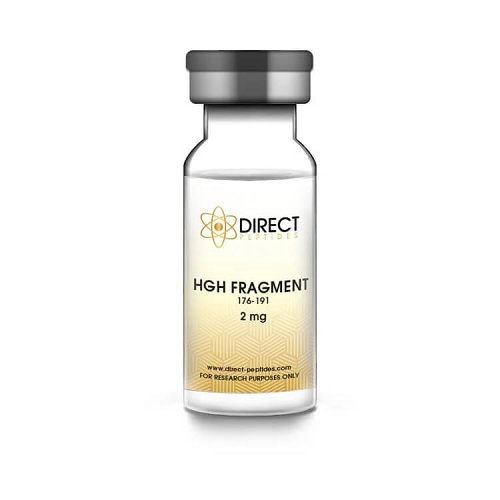
Looking to explore advanced peptides for fat reduction and body composition? HGH Fragment 176-191 is a synthetic peptide derived from human growth hormone (hGH), designed to zero in on fat loss without the unwanted side effects of full-length growth hormone. In Saudi Arabia, this peptide is gaining traction among researchers for its targeted approach to weight management and metabolic studies.
What Is HGH Fragment 176-191?
Think of HGH Fragment 176-191 as a laser-focused snippet of the larger growth hormone molecule it contains amino acids 176 to 191, the segment responsible for fat metabolism. Unlike the full hormone, this fragment selectively mimics the fat-burning effects of hGH without messing with insulin or other hormonal systems. Saudi researchers are keen to investigate its potential to reduce body fat, enhance lean muscle retention, and support weight management strategies with fewer complications.
How Does HGH Fragment 176-191 Work?
This peptide primarily acts on adipose tissue by stimulating lipolysis—the breakdown of stored fat—and simultaneously suppressing lipogenesis, the process of creating new fat. It achieves this by activating beta-3 adrenergic receptors on fat cells, encouraging them to release triglycerides as free fatty acids that the body can use for energy. Importantly, it sidesteps increasing insulin-like growth factor 1 (IGF-1) and avoids interference with insulin receptors, minimizing side effects commonly linked to growth hormone therapy.
This selective action makes it a promising candidate for obesity and metabolic disorder research in Saudi Arabia, where many look to Buy HGHFrag191 Peptide Saudia Arabia as a cutting-edge solution.
Peptide Profile:
-
Sequence: H-Leu-Arg-Ile-Val-Gln-Cys-Arg-Ser-Val-Glu-Gly-Ser-Cys-Gly-Phe-Tyr-OH
-
Molecular Formula: C₇₈H₁₂₅N₂₃O₂₃S₂
-
Molecular Weight: 1817.1 g/mol
-
PubChem CID: 16131447
Research Highlights and Benefits:
-
Fat Loss & Weight Management: Known as the “lipolytic fragment,” studies like those from Monash University have demonstrated impressive fat-burning results. Obese mice treated with the peptide gained nearly 50% less weight, while lean mice maintained their normal weight, suggesting a natural regulatory effect on energy balance.
-
Safety Profile: Unlike full-length HGH, which can raise concerns about insulin resistance and other side effects, meta-analyses show HGH Fragment 176-191 is well tolerated with no significant adverse impacts on glucose metabolism or IGF-1 levels.
-
Blood Sugar Control: This fragment shows potential in lowering blood glucose by prolonging plasma insulin elevation, offering a tantalizing avenue for prediabetes and type 2 diabetes research.
-
Cartilage Repair: Saudi studies on rabbits indicate the peptide enhances cartilage regeneration, especially when combined with hyaluronic acid injections. This synergy may reduce osteoarthritis symptoms and delay surgical interventions.
-
Chemotherapy Enhancement: Innovative research has incorporated this peptide into chitosan nanoparticles with doxorubicin, improving drug binding and efficacy against breast cancer cells pointing toward safer, more effective chemotherapy options.
-
Available for Research in Saudi Arabia: HGH Fragment 176-191 is offered as a lyophilized powder in 2 mg, 5 mg, and 10 mg vials. Kits including syringes and bacteriostatic water simplify preparation for lab use.
-
Combination Peptides: Explore the power trio: HGH Fragment 176-191, Ipamorelin, and CJC-1295 (no DAC). This blend supports fat metabolism, natural growth hormone release, muscle preservation, and recovery. Each peptide complements the others, making the triple blend a promising focus for research on body composition and hormonal health.
-
Nasal Spray Formulation: For easier administration, HGH Fragment 176-191 is also available as a nasal spray. This delivery method targets fat metabolism efficiently, offering an alternative to injections, with lower side effect risk compared to full-length HGH.
Back to Homepage
Saudi researchers eager to investigate cutting-edge approaches to fat loss, metabolic health, and therapeutic innovation will find HGH Fragment 176-191 an invaluable tool. After all, as the old saying goes, “The proof of the pudding is in the peptide” and this fragment certainly delivers promising scientific flavor.
